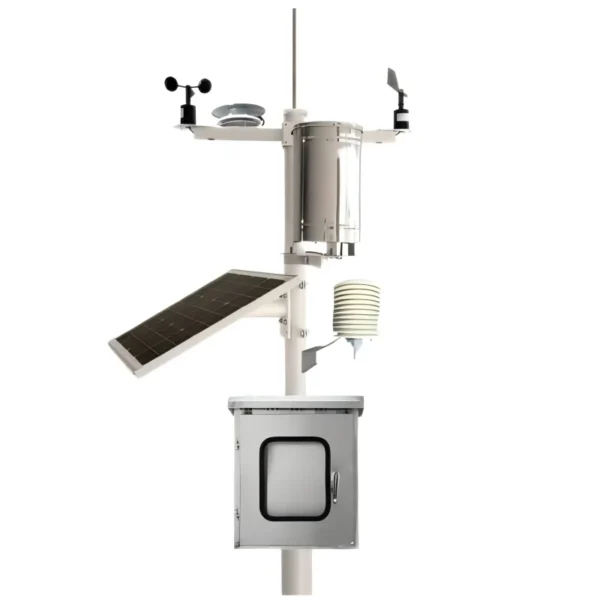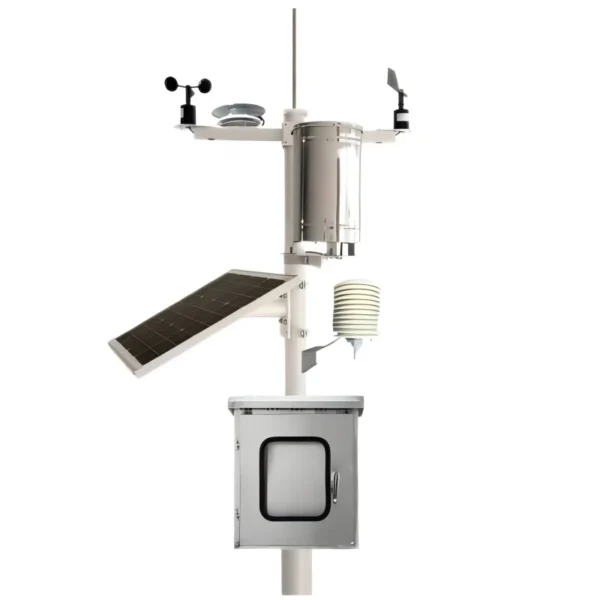
# Automatic Weather Station: Advanced Technology for Accurate Meteorological Data Collection
Automatic Weather Stations (AWS) have revolutionized the way meteorological data is collected and analyzed. These advanced systems are designed to provide accurate and real-time weather information, which is crucial for various industries, including agriculture, aviation, and disaster management.
## What is an Automatic Weather Station?
An Automatic Weather Station is a sophisticated system that consists of various sensors and instruments to measure atmospheric conditions. These sensors are capable of recording data such as temperature, humidity, wind speed, wind direction, rainfall, and atmospheric pressure. The data collected is then transmitted to a central database for analysis and dissemination.
### Key Components of an Automatic Weather Station
– **Sensors**: These are the primary components that measure different weather parameters. Common sensors include thermometers for temperature, hygrometers for humidity, anemometers for wind speed, and barometers for atmospheric pressure.
– **Data Logger**: This device records the data collected by the sensors. It ensures that the data is stored accurately and can be retrieved for analysis.
– **Communication System**: AWS systems are equipped with communication modules that transmit data to a central server. This can be done via satellite, cellular networks, or the internet.
– **Power Supply**: Most AWS systems are powered by solar panels, ensuring continuous operation even in remote locations.
## Benefits of Using Automatic Weather Stations
The use of Automatic Weather Stations offers numerous advantages:
– **Accuracy**: AWS systems provide highly accurate and reliable data, which is essential for making informed decisions.
– **Real-Time Data**: The ability to collect and transmit data in real-time allows for immediate response to changing weather conditions.
– **Cost-Effective**: Once installed, AWS systems require minimal maintenance, making them a cost-effective solution for continuous weather monitoring.
– **Remote Monitoring**: AWS systems can be installed in remote and inaccessible areas, providing valuable data that would otherwise be difficult to obtain.
## Applications of Automatic Weather Stations
Automatic Weather Stations are used in a variety of applications:
– **Agriculture**: Farmers use AWS data to optimize irrigation, planting, and harvesting schedules, leading to increased crop yields.
– **Aviation**: Accurate weather data is crucial for flight safety and efficiency. AWS systems provide real-time information to pilots and air traffic controllers.
– **Disaster Management**: AWS data helps in predicting and monitoring natural disasters such as hurricanes, floods, and droughts, enabling timely evacuation and resource allocation.
– **Research**: Meteorologists and climate scientists use AWS data for research and modeling, contributing to a better understanding of weather patterns and climate change.
## Conclusion
Automatic Weather Stations represent a significant advancement in meteorological technology. Their ability to provide accurate, real-time weather data has far-reaching implications for various industries and research fields. As technology continues to evolve, AWS systems will become even more integral to our understanding and management of weather and climate.
Keyword: automatic weather station
